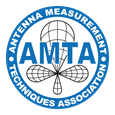Olav Breinbjerg, Kyriakos Kaslis, Jeppe Nielsen, October 2017
Gain is a principal property of antennas; it is essential in establishing the link budget for communication and sensing systems through its presence in Friis’ transmission formula and the radar range equation. The experimental determination of antenna gain is most often based on a gain-transfer technique involving a reference antenna for which the gain has been calibrated to high accuracy; this is typically a pyramidal horn antenna [1]. The required accuracy of antenna gain obviously depend on the application; in some cases it can very high, ±0.1 dB or less, and this implies an even higher accuracy, of the order of ±0.01dB, for the gain reference antenna. This work investigates the accuracy to which a gain reference antenna can be calibrated; the investigation is based on experimental spherical near-field antenna measurements [2] and computational integral equation / method of moments simulations [3]. While calibration of gain reference antennas has been studied in many previous works, even works from early 1950s [4]-[6], this work is novel in systematically supporting measurements with full-wave simulations. Such simulations facilitate the study of e.g. the effect of multiple reflections between antennas at short distances.
We study two absolute calibration techniques for the gain of pyramidal horn antennas. The first technique determines gain as the product of directivity and radiation efficiency; this technique has been referred to as the pattern integration technique [7] (which is not an entirely adequate designation since gain cannot be determined from the radiation pattern). The second technique determines the gain from Friis’ transmission formula [8] for two identical antennas; this technique is generally referred to as the two-antenna technique [1]. These two calibration techniques involve very different steps and contain very different sources of error; for both techniques our investigation involves measurements as well as simulations.
For the pattern integration technique we compare experimental and computational results for the directivity and demonstrate agreement within one-hundredth of a dB. The radiation efficiency is calculated by different techniques based on the surface impedance boundary condition for the metallic walls of the pyramidal horn. This technique is not influenced by proximity effects or by impedance mismatch between the measurement system and the gain reference antenna.
For the two-antenna techniques we compare experimental and computational results for the gain and we compare the calculated distance-dependence with that of the extrapolation technique [9]. It is demonstrated how the use of the phase center distance in Friis’ transmission formula notably decreases the necessary separation between the antennas for a required accuracy, but that multiple reflections may then become a limiting factor. This technique is highly influenced by the impedance mismatch that must be accurately accounted for.
We compare the gain values resulting from the pattern integration technique and the two-antenna technique, including their very different uncertainty estimates, for a C-band standard gain horn. The work is related to an on-going ESA project at the DTU-ESA Spherical Near-Field Antenna Test Facility for the on-ground calibration of the scatterometer antennas of the EUMETSAT MetOp Second Generation B-series satellites.
IEEE Standard – Test Procedures for Antennas, Std 149-1979, IEEE & John Wiley & Sons, 1979.
J.E. Hansen, “Spherical Near-Field Antenna Measurements”, Peter Perigrinus Ltd., London 1987.
www.wipl-d.com
W.C. Jakes, “Gain of Electromagnetic Horns”, Proceedings of the IRE, pp. 160-162, February 1951.
E.H. Braun, “Gain of Electromagnetic Horns”, Proceedings of the IRE, pp. 109-115, January 1953.
W.T. Slayton, “Design and Calibration of Microwave Antenna Gain Standards”, Naval Research Laboratory, Washington D.C., November 1954.
A. Ludwig, J. Hardy, and R. Norman, “Gain Calibration of a Horn Antenna Using Pattern Integration”, Technical Report 32-1572, Jet Propulsion Laboratory, California Institute of Technology, October 1972.
H.T. Friis, “A Note on a Simple Transmission Formula”, Proceedings of the I.R.E. and Waves and Electrons, pp. 254-256, May 1946.
A.C. Newell, R.C. Baird, P.F. Wacker, “Accurate Measurement of Antenna Gain and Polarization at Reduced Distances by an Extrapolation Technique”, IEEE Transactions on Antenna and Propagation, vol. 21, no. 4, pp. 418-431, July 1973.
